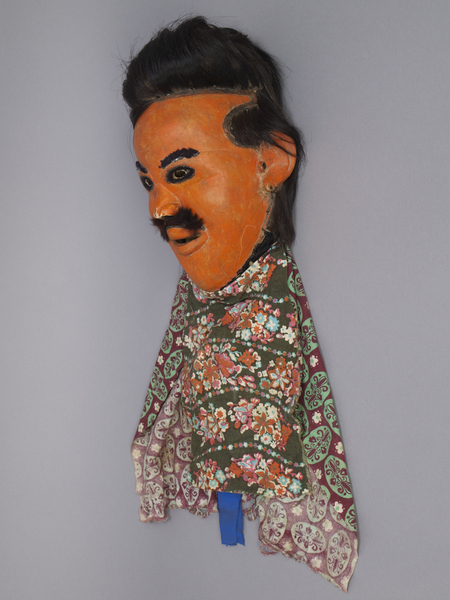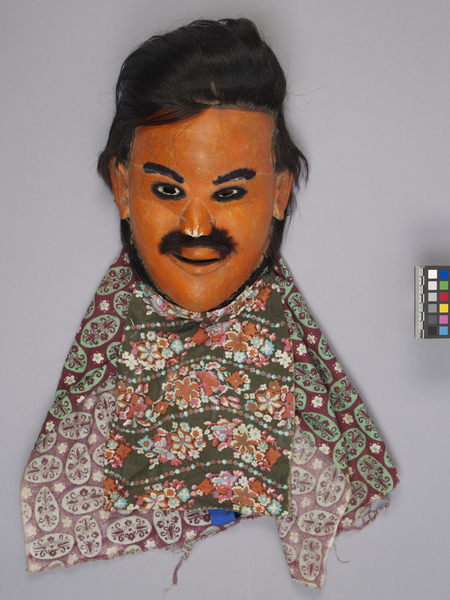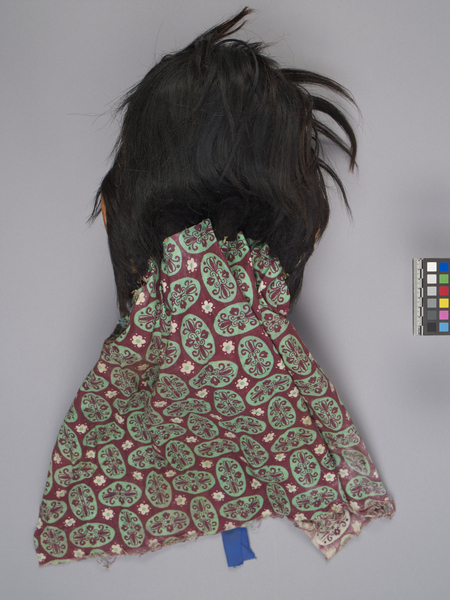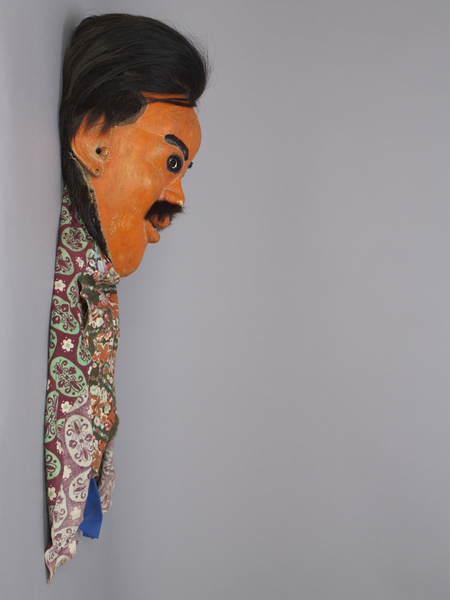Mask Item Number: 3137/6 from the MOA: University of British Columbia




Description
Mask made of carved wood, animal skin and cloth. The face is painted orange, and displays an open mouth, small nose, eye holes bored through the wood, and rounded ears to the sides. Tufts of hair are glued to the upper lip for a mustache and wool is attached around the eyes and for brows. A strip of wood is inserted into the mouth for teeth, unpainted, and white paper is set inside the eyes with holes torn in the centre to allow the wearer to see. Long black goat hair is attached to the top of the head. Flowered fabrics hang from the chin and back.
History Of Use
Simoni (human face-shaped) mask worn by a male initiate in the Nyau secret society. This group of masks (3137/1-7) were used in dances that occurred after the crops were harvested (July or August). The masked men, who represented ancestral spirits or unique characters, danced to depict certain behaviours, or characteristics. The dancers also wore costumes made of grass, leaves and coloured cloth, and sometimes had white ash covering their arms and legs. They were accompanied by drumming, as well as the chanting, singing and clapping of some of the senior women.
Narrative
The Butlers worked at Bunda College of Agriculture near Lilongwe, Malawi, in the 1970s. Robert Butler was invited to become a member of the Nyau secret society, and they were invited to Nyau (Gule Wamkulu) ceremonies and ritual dances (at a time when the dances were not yet performed for the public). The Butlers purchased the masks from members of the society during that time.
Item History
- Made in Lilongwe, Malawi before 1979
- Owned by Lorna Michael Butler and Robert Butler before October 16, 2015
- Received from Lorna Michael Butler (Donor) and Robert Butler (Donor) on October 16, 2015
What
Who
- Culture
- Chewa
- Previous Owner
- Lorna Michael Butler and Robert Butler
- Received from
- Lorna Michael Butler (Donor) and Robert Butler (Donor)
Where
- Holding Institution
- MOA: University of British Columbia
- Made in
- Lilongwe, Malawi
When
- Creation Date
- before 1979
- Ownership Date
- before October 16, 2015
- Acquisition Date
- on October 16, 2015
Other
- Condition
- good
- Accession Number
- 3137/0006